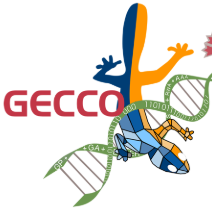In real-world optimization scenarios, the problem instance that we are asked to solve may change during the optimization process, e.g., when new information becomes available or when the environmental conditions change. In such situations, one could hope to achieve reasonable performance by continuing the search from the best solution found for the original problem. Likewise, one may hope that when solving several problem instances that are similar to each other, it can be beneficial to ``warm-start'' the optimization process of the second instance by the best solution found for the first. However, it was shown in [Doerr et al., GECCO 2019] that even when initialized with structurally good solutions, evolutionary algorithms can have a tendency to replace these good solutions by structurally worse ones, resulting in optimization times that have no advantage over the same algorithms started from scratch. Doerr et al. also proposed a diversity mechanism to overcome this problem. Their approach balances greedy search around a best-so-far solution for the current problem with search in the neighborhood around the best-found solution for the previous instance. In this work, we first show that the re-optimization approach suggested by Doerr et al. reaches a limit when the problem instances are prone to more frequent changes. More precisely, we show that they get stuck on the dynamic LeadingOnes problem in which the target string changes periodically. We then propose a modification of their algorithm which interpolates between greedy search around the previous-best and the current-best solution. We empirically evaluate our smoothed re-optimization algorithm on LeadingOnes instances with various frequencies of change and with different perturbation factors and show that it outperforms both a fully restarted (1+1) Evolutionary Algorithm and the re-optimization approach by Doerr et al.
翻译:在现实世界优化情景中,我们被要求解决的问题实例可能会在优化过程中发生变化,例如,当新信息出现时,或者当环境条件发生变化时。在这种情况下,人们希望通过继续从最初问题的最佳解决方案中寻找最初问题的最佳解决方案,从而实现合理的绩效。同样,人们可能希望,当解决一些彼此相似的问题实例时,他们可能有利于“温暖启动”二审的最佳解决方案。然而,在优化过程中,[Doerr 等人,GECCO 20199] 显示,即使开始采用结构上好的解决方案或环境条件发生变化时,进化算法也有可能以结构上更糟糕的解决方案取代这些好解决方案。同样,Doerr 等人也可能会希望,当解决一些彼此相似的问题时,他们的方法可以平衡到“温和”的当前问题搜索,在前一例中,我们首先通过结构上的最佳解决方案,我们首先评估的是当前更稳定的变现的变现方法,然后在Dorr AL 之前的变现中,我们再次提出一个问题。



